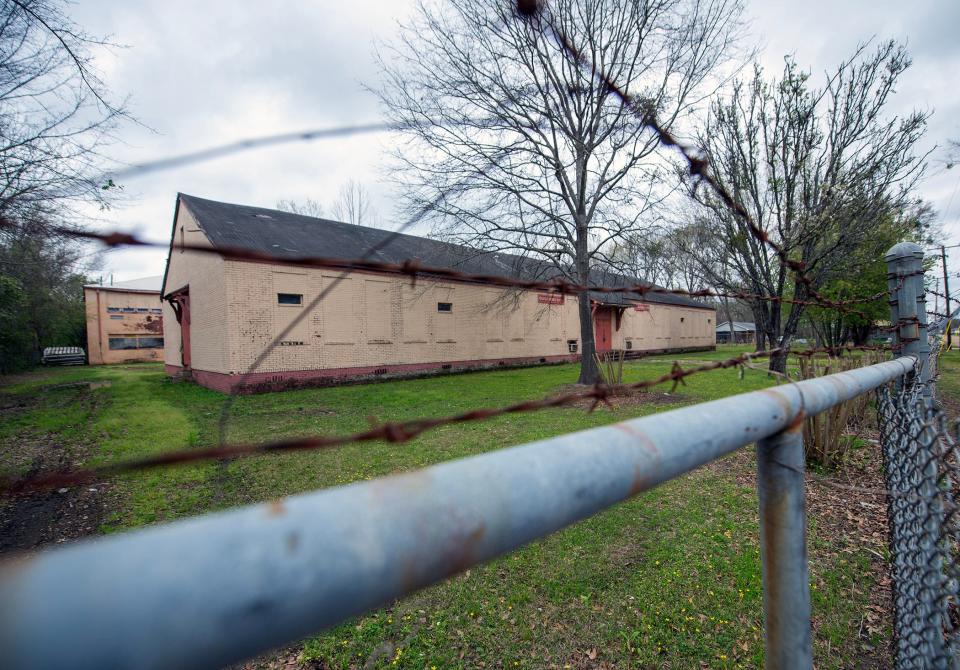Architecture firm breathes new life into these three MS Rosenwald Schools. Read more here
- Oops!Something went wrong.Please try again later.
Rosenwald Schools have served as living legacies of Black history in the South for a century. Over the years, the schools have been gradually declining or abandoned, leaving the historic school buildings as shells of the past.
Now, a Mississippi architectural firm is helping to restore the legacy, starting with three Rosenwald Schools throughout Mississippi.
In late February 2024, Belinda Stewart Architecture launched the Rosenwald Schools Preservation Project that will restore three school buildings — one each in Madison, Quitman and Sunflower counties.
The Rosenwald Schools Preservation Project is partially funded by a Community Heritage Preservation Grant through the Mississippi Department of Archives and History.
More: Mississippi left off 'Best Southern Cities' list. Here are 3 cities we wish made the cut

The history of Rosenwald Schools
The 1896 U.S. Supreme Court case "Plessy v. Ferguson" created the "separate but equal" doctrine, legalizing segregation between Black citizens and white citizens in separate public facilities.
After the ruling, schools for white children received a significantly higher amount of attention and funding from state governments. Black students, especially those is rural areas, were often forced to attend school in abandoned, dilapidated churches and tenant buildings with a fraction of the resources available to white schools.
The Rosenwald Fund was created to help fill in those gaps. Julius Rosenwald, CEO of Sears, and Booker T. Washington, founder of the Tuskegee Institute, partnered to create the fund.
Schools aided by the Rosenwald Fund were called Rosenwald Schools. Local communities were expected to match the Rosenwald funding for each school.
"A lot of these were actually built by the local community," said Jennifer Baughn, chief architectural historian at the Mississippi Department of Archives and History. "It really shows how African Americans in the early 20th century were still so serious about making sure their children were educated, and even in very difficult times of racial segregation, they wanted to make sure they were getting a good education and could potentially progress to another level economically and culturally."
The architecture of Rosenwald Schools had a lasting impact on school design nationally. The buildings were designed carefully with optimized learning at the forefront. They often included one-story designs to combat the fire hazards that come with multiple stories and large windows so they didn't rely on electricity, a resource many of the rural areas lacked.
"They look like simple buildings, but actually they were groundbreaking for their time," Baughn said.
More on MS education: Is the Mississippi Miracle real despite the state continuing to rank low in education?
By the time the Rosenwald Fund dissolved during the Great Depression in the 1930s, more than 5,000 Rosenwald Schools had been built throughout the South.
Mississippi alone had more than 500 Rosenwald Schools.
Today, only a handful of Mississippi's Rosenwald Schools remain. Many of the buildings have been repurposed, and several others sit vacant.
Preserving the past
Vacant Rosenwald Schools can still play a significant role in today's society, some architects say.
Belinda Stewart Architects, located in Eupora, focuses on the restoration and preservation of existing historic buildings. Belinda Stewart, principal of the firm, said Rosenwald Schools have always been on the radar of her partners and her.
Stewart and her partners have worked on Rosenwald Schools in the past, relocating one in Tennessee.
Nichols Elementary School currently sits empty on a street corner in Canton, waiting for a new life. Restoration efforts on that building will begin soon.
The purpose of the revamped Nichols Elementary School is not yet finalized. Other Rosenwald Schools in the South have been repurposed into community centers or retirement homes. Some are used by adjacent churches.
"The goal is to bring (the Nichols Elementary building) back, help tell the story and bring it back to be an active part of that community," Stewart said.
Marks Rosenwald School resides in Quitman County on the campus of an active school. Stewart and her team have been working to revive the Marks building for the past seven years.
The building's structure was ruined by termites. Once restored, the building will include several new classrooms that the neighboring school can use once more.
The Drew Rosenwald School in Sunflower County, once restored, will serve as a museum and help support the Emmett Till trail. The museum will tell the story of Willie Reed, a witness in the Emmett Till trial and a graduate of the Drew Rosenwald School.
The Rosenwald Schools Preservation Project will not end with those three schools. Stewart and her team hope to continue restoring Mississippi Rosenwald Schools for years to come.
Even if they are no longer used as schools, the preserved Rosenwald Schools will remain vital assets to their communities.
"I think Julius Rosenwald would've been very pleased to see that the change in function is still a community function," Baughn said.
Got a news tip? Contact Mary Boyte at mboyte@jackson.gannett.com
This article originally appeared on Mississippi Clarion Ledger: Architecture firm breathes new life into three MS Rosenwald Schools

